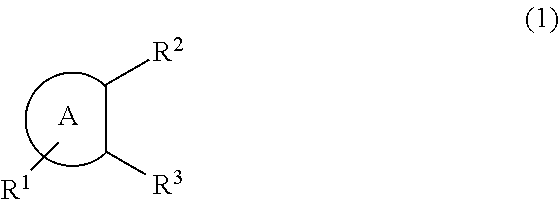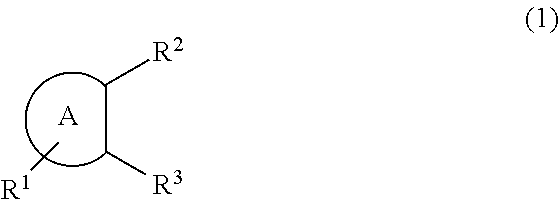Organic electroluminescence material composition, thin film formation method, and organic electroluminescence element
- Summary
- Abstract
- Description
- Claims
- Application Information
AI Technical Summary
Benefits of technology
Problems solved by technology
Method used
Image
Examples
example 1
(1) Preparation of an Organic EL Material Composition
[0135]To a glass bottle, 0.2 g of the compound H9, which is an anthracene derivative, 0.02 g of the compound D1, which is a dopant and 10 g of indene were added, followed by stirring to form an organic EL material composition. The concentration of the anthracene derivative was 2 wt %, and the ratio (weight ratio) of H1 and D1 was 100:10.
[0136]As for this composition, it was visually confirmed that the solution contained no insoluble matters.
(2) Fabrication of an Organic EL Device
[0137]A glass substrate of 25 mm by 75 mm by 1.1 mm thick with a transparent electrode (GEOMATEC CO., LTD.) was subjected to ultrasonic cleaning with isopropyl alcohol for 5 minutes, and cleaned with ultraviolet rays and ozone for 30 minutes.
[0138]On the substrate, by the spin coating method, polyethylenedioxythiophene / polystyrene sulfonic acid (PEDOT:PSS) to be used in a hole-injecting layer was formed into a film with a thickness of 100 nm.
[0139]Subseque...
examples 2 to 87
[0148]The organic EL material composition and the organic EL device were prepared and evaluated in the same manner as in Example 1, except that the anthracene derivative (host), the dopant and the solvent shown in Table 1 were used.
[0149]The results are shown in Tables 1 to 4.
PUM
 Login to View More
Login to View More Abstract
Description
Claims
Application Information
 Login to View More
Login to View More - R&D
- Intellectual Property
- Life Sciences
- Materials
- Tech Scout
- Unparalleled Data Quality
- Higher Quality Content
- 60% Fewer Hallucinations
Browse by: Latest US Patents, China's latest patents, Technical Efficacy Thesaurus, Application Domain, Technology Topic, Popular Technical Reports.
© 2025 PatSnap. All rights reserved.Legal|Privacy policy|Modern Slavery Act Transparency Statement|Sitemap|About US| Contact US: help@patsnap.com



